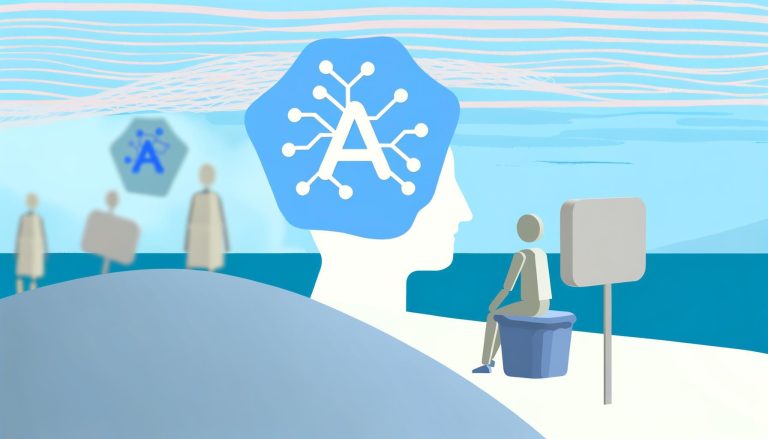Light therapy, also known as photobiomodulation, is a cutting-edge treatment making waves in the mental health industry. As technology evolves, AI-optimized photobiomodulation is becoming the next frontier in treating mental health issues. This article will explore how AI is revolutionizing light therapy, its benefits, and practical applications for enhancing mental well-being.
What is Light Therapy?
Light therapy involves using specific wavelengths of light to improve various health conditions, including seasonal affective disorder (SAD), depression, and anxiety. Historically, it has been a go-to treatment during the dark winter months for those struggling with SAD. However, its applications have broadened over time.
How Light Therapy Works
The science behind light therapy revolves around the body’s internal clock, known as the circadian rhythm. Exposure to light can influence the production of melatonin, a hormone that regulates sleep. By stimulating certain neurological pathways, light therapy can help modify mood and behavior.
The Role of AI in Light Therapy
Artificial Intelligence is transforming numerous industries, and mental health treatment is no exception. AI-optimized light therapy combines the benefits of photobiomodulation with advanced data analytics and machine learning algorithms to create personalized treatment plans.
Data-Driven Customization
- Personalized Treatment Plans: AI can analyze an individual’s health data, including mood patterns, sleep cycles, and past responses to treatments, to develop a highly personalized light therapy regimen.
- Adaptive Therapy: AI algorithms continuously monitor patient data to adapt treatments in real-time, ensuring optimal results.
Enhanced Diagnostics
AI-driven tools can diagnose mental health issues with unprecedented accuracy. By assessing a wide array of biomarkers, including heart rate variability, skin conductance, and brainwave activity, AI can identify subtle changes that could indicate psychological stress or mood disorders.
Accessibility and Convenience
AI-optimized light therapy devices can often be used at home, making treatment more accessible. Mobile apps, synced with light therapy devices, can track user progress and provide real-time feedback, making it easier for individuals to stick to their treatment plans.
Integration with Other Technologies
AI-enhanced light therapy can easily be integrated with other emerging technologies such as Virtual Reality (VR) and wearables. This allows for multi-modal treatment approaches, combining visual and auditory stimuli to amplify therapeutic effects.
Benefits of AI-Optimized Photobiomodulation
Combining AI with light therapy offers several advantages, making it a compelling option for mental health treatment:
Increased Efficacy
AI-optimized treatments are highly effective because they are tailored to individual needs. This customization increases the likelihood of achieving desired outcomes and reduces the risk of side effects.
Time Efficiency
Traditional light therapy sessions require frequent adjustments and monitoring by healthcare providers. AI systems can automate these processes, saving both time and resources while maintaining high-quality care.
Empowerment Through Data
Access to real-time data and analytics empowers users to take an active role in their treatment plans. Knowing how their body responds to different light wavelengths can provide valuable insights, encouraging ongoing participation in their mental health journey.
Cost-Effectiveness
While initial investments in AI-enhanced devices might be higher, the long-term benefits, including reduced need for medication and fewer therapy sessions, make this approach cost-effective in the long run.
Practical Applications
AI-optimized photobiomodulation has a wide range of practical applications in mental health treatment. Here are some examples:
Seasonal Affective Disorder (SAD)
One of the earliest and most common uses of light therapy is in treating SAD. AI algorithms can predict the onset of symptoms based on historical data, automatically adjusting light exposure to preemptively address the issue.
Generalized Anxiety Disorder (GAD)
AI-optimized light therapy can help regulate the nervous system, reducing anxiety symptoms. Customized light exposure schedules can aid in calming the mind and improving overall mental balance.
Depression
Depression treatment can be complex and multifaceted. AI-driven light therapy can complement traditional treatments by enhancing mood and breaking the cycle of depressive episodes through carefully timed light exposure.
Insomnia and Sleep Disorders
AI-optimized photobiomodulation can help in regulating sleep patterns, thereby reducing symptoms of insomnia. By aligning light exposure with the natural circadian rhythm, individuals can achieve better sleep quality.
Workplace Stress
Employers are increasingly recognizing the importance of mental well-being. AI-enhanced light therapy can be implemented in work settings to help employees manage stress and enhance productivity.
Future Prospects
The future of AI-optimized light therapy looks promising with ongoing research and technological advancements. Innovations are on the horizon that could further improve efficacy and accessibility:
Incorporating Genetic Data
Future AI systems might integrate genetic information to provide even more personalized treatment plans. Understanding an individual’s genetic predisposition to certain mental health conditions could refine light therapy protocols.
AI and Deep Learning
Advancements in AI and deep learning could lead to more sophisticated algorithms capable of predicting mental health crises before they occur. This predictive capability could enable timely intervention and prevent severe episodes.
Collaborative Platforms
The integration of AI with telemedicine platforms can make light therapy more accessible globally. This could democratize mental health treatment, providing high-quality care to underserved populations.
Conclusion
AI-optimized photobiomodulation represents a revolutionary step forward in mental health treatment. By harnessing the power of artificial intelligence, light therapy can become more personalized, efficient, and accessible. With continued research and technological advancements, the future looks bright for AI in mental health treatment.
If you’re interested in exploring light therapy for enhancing your well-being, consider using tools like Zenora for tracking mood and setting personalized goals. These features can complement your light therapy regimen, providing a holistic approach to mental health.
The integration of AI in light therapy is not just futuristic—it’s here and now, offering new hope for those seeking better mental health.





